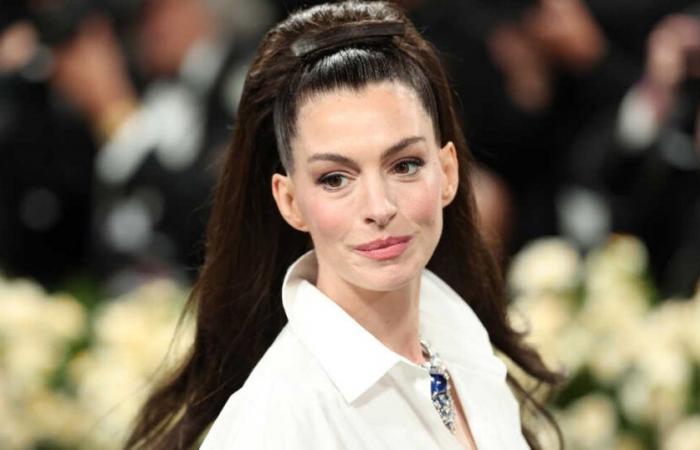On a fashionable night, glamor and vindication such as Met Gala, not only red carpet styles are carried out: they also do ‘Beauty Looks’ and the manicure of the attendees (that of Georgina Rodríguez is our favorite). And if there was one that especially caught the attention, that was that of Anne Hathaway, the actress was beautiful! He wore a design by Carolina Herrera who paid tribute to the figure of André Leon Talley, but it was his effect of ‘handsome up’ what caught his attention.
All agree: Anne Hathaway is more beautiful than ever. But what is behind this flattering change? We talked to Dr. Mar Mira, co -director of Clínica Mira+Cueto, to understand what touch -ups could be behind this ‘Glow Up’.
As the doctor explains, “We could attribute the result of this ‘handsome’ effect to an approach of combined treatments, implemented progressively in recent years. For example, the application of neuromodulators and hyaluronic acid with bio -stimulators with the aim of inducing neocolagénesis and improving the firmness and structure of the facial contour. Always respecting his harmony and naturalness. ”


The key, according to the expert, is in the customization of the treatment. “We make a very exhaustive facial diagnosis before treating, detailed, analyzing both structural and dynamic face trends, at rest and moving. In this way we manage to redirect the trends of individual aging to gradually contain that passage of time without transforming the patient’s essence.”
In front of the dreaded ‘Pillow Face’ that has affected many celebrities in the pastthe most advanced aesthetic medicine approach has turned towards maximum respect for facial individuality. “In older patients we have been seeing known people or faces for years who have ended with the one known as ‘Pillow Face’ or Almohada face. These are faces on treaties or filled that do not respect the appropriate anatomical proportions,” says Dr. Mira.
This new paradigm, which the doctor defines as “aesthetic medicine without footprint”commitment to natural results that do not betray any intervention. “Our way of seeing and treating aesthetic medicine is a movement in favor of beauty, identity, naturalness and always in defense of each person’s own essence.”


For her, the big mistake is to intervene Without a previous study or falling into series treatments that produce clonic faces: “If any face is artificial, it means that it has not been treated individually, after a exhaustive diagnosis and evaluation, but that a serial treatment has been done. The footprint is demonstrated on clonic faces and without essence.”
In this sense, Hathaway would be the perfect example of how aesthetic medicine can beautify without transforming. “Each treatment has to be integrated into a facial harmony, whether it is about improving wrinkles, supporting or improving skin quality or skin aging. Everything has to be integrated into personal essence,” he says.
In addition, it emphasizes that the preventive approach has also changed the rules of the game. “Years ago, aesthetic medicine was thought to be only for more advanced ages and today the age fork has expanded a lot. Treating early with a preventive approach and, for example, with adequate doses of hyaluronic in the facial strategic anatomical points, The signs of tiredness or long -term sagging can be stopped.”
And he concludes with a clear reflection: “When someone in our environment says ‘you have done something’ instead of ‘how beautiful or how beautiful you are’, is that something fails and we can feel stigmatized by that comment. If something ‘collides’ of a person as a whole is that, according to our expert opinion, something is not well done.”
With this approach without a footprint, natural and highly personalized, Anne Hathaway thus becomes the best example of how aesthetic medicine can add without subtracting, beautifying without transforming and, above all, helping us see us better while still recognizing ourselves in front of the mirror.






